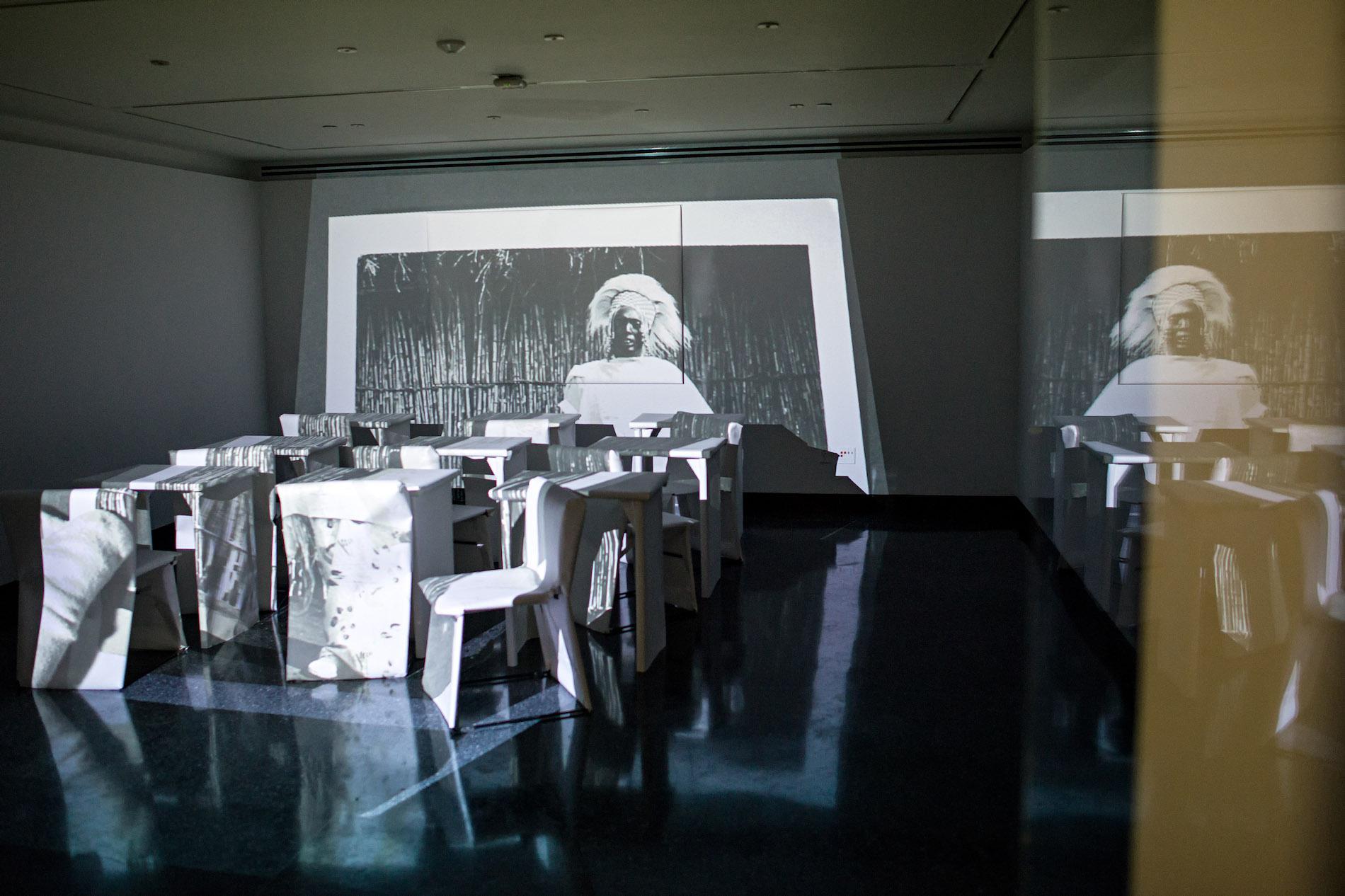
Archival Dialogues: Reading the Black Star Collection, installation view (work by artist Michael Snow pictured), 2012 © Clifton Li, Ryerson Image Centre
The Ryerson Image Centre - Home to The Black Star Collection iconic photojournalism from New York's Black Star Agency
Sep. 29, 2012
The Black Star Collection of approximately 292,000 black and white photographs is one of the world’s most significant collections of photojournalism. Tracing the social and political history of the 20th century, the iconic images were gifted to Ryerson University by an anonymous donor. The Collection now makes its home at the Ryerson Image Centre (RIC), Toronto's newest cultural destination, opening September 29, 2012.
The collection includes spectacular images of famous figures from every avenue of life (Marilyn Monroe, Fidel Castro, Muhammad Ali, Marc Chagall, etc.) as well as photo essays documenting key historic events of the past century, such as the Great Wars, the Spanish Civil War, the American Civil Rights era and the Vietnam War.
New York’s Black Star Agency commissioned the images for publications that defined 20th century journalism, including Life, Look, The Saturday Evening Post, The New York Times, Time and Newsweek. The agency worked with some of the most influential photographers in the history of photography: the father of modern photojournalism, Henri Cartier-Bresson, legendary war photographer Robert Capa, Britain’s famed Bill Brandt and the early 20th century female photographer Germaine Krull among many others.
“The Black Star Collection forms a valuable repository of collective global memory,” says John Isbister, Interim Provost and Vice President Academic, Ryerson University. “The Black Star Collection — the single largest gift of cultural property ever made to a Canadian university — has allowed us to build our Centre on a foundation that will lead to years of cutting edge scholarly research and creative activity.”
The story of The Black Star Agency is fascinating in and of itself. In 1935, Ernest Mayer, owner of the Berlin-based Mauritius photo agency, fled Nazi Germany, bringing with him some 5,000 images to New York. Together with fellow emigres Kurt Safranski, a literary editor, and Kurt Kornfeld, a literary agent, he created The Black Star Agency, located in the Graybar building near Grand Central Station. The Black Star Agency went on to represent major photographers documenting cultural, social and political history.
Ryerson University has been entrusted with preserving this historic visual archive, and making the photographs accessible to the public through exhibition and publication. The Black Star Collection - the “raison d'etre” of the RIC, as Doina Popescu, Director of the Ryerson Image Centre, puts it - already functions as muse to Canadian artists and image makers. The Ryerson Image Centre’s grand opening exhibition, Archival Dialogues: Reading the Black Star Collection, features the multi-disciplinary response of internationally renowned Canadian artists Stephen Andrews, Christina Battle, Marie- Helene Cousineau, Stan Douglas, Vera Frenkel, Vid Ingelevics, David Rokeby, and Michael Snow to the collection. Reflecting on their respective processes of working with the Black Star Collection, each of the artists has also produced six artist pages for the exhibition catalogue. Their interpretations bring new and contemporary meaning to the powerful, historic Black Star Collection.
Co-curated by Doina Popescu, Director of the Ryerson Image Centre, and Peggy Gale, Archival Dialogues: Reading the Black Star Collection opens on September 29, 2012 in Toronto, marking the public grand opening of The Ryerson Image Centre.
Ryerson Image Centre Grand Opening Exhibition
Archival Dialogues: Reading the Black Star Collection
September 29 - December 16, 2012
New works by Stephen Andrews, Christina Battle, Marie-Helene Cousineau, Stan Douglas, Vera Frenkel, Vid Ingelevics, David Rokeby and Michael Snow inspired by the Black Star Collection at Ryerson University.
Curated by Doina Popescu and Peggy Gale.
Ryerson Image Centre: 33 Gould Street, Toronto, Canada
Admission to The Ryerson Image Centre is free.
Archival Dialogues: Reading the Black Star Collection is made possible through the generous support of the Ontario Cultural Attractions Fund, Canada Council for the Arts, Ontario Arts Council, Toronto Arts Council, Ryerson University, the Goethe-Institut Toronto, Partners in Art, The Howard and Carole Tanenbaum Family Charitable Foundation, and The Paul J. Ruhnke Memorial Fund.